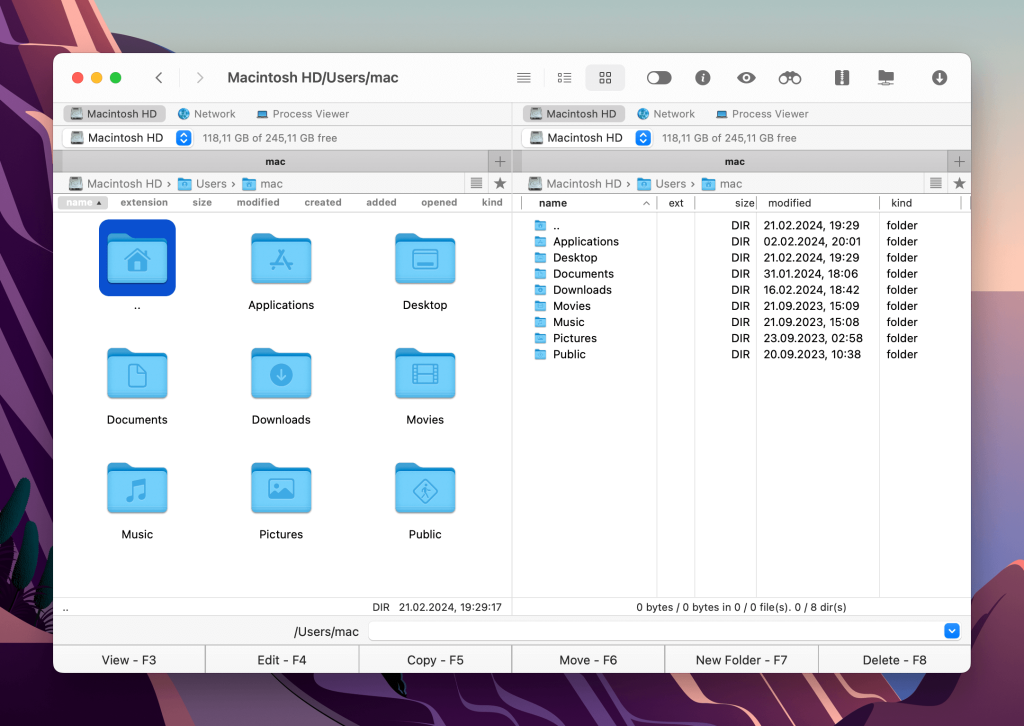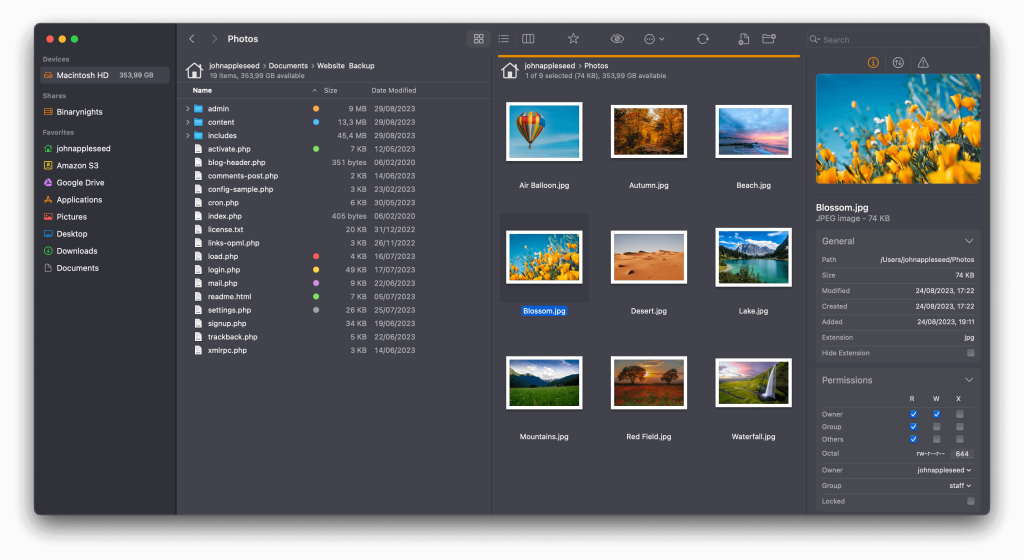- File manager for Mac
- Is ForkLift as powerful as Commander One?
Is ForkLift as powerful as Commander One?
File management is so much easier when you have a proper file manager on hand. With Commander One, you can experience the best possible file management and have all your files within reach.
Just try and evaluate all the benefits of Commander One over Forklift.
There is a variety of them available and when you want to move up to something more flexible with a truly professional feeling you have to take lots of factors into consideration. Will it support all connections you need to work with? Which features does it offer?

Looking at two dual-panel file managers - Commander One and ForkLift
Commander One
Commander One is completely developed in Swift. It lets you manage a large number of files in a simple and efficient way. Commander One supports local and network drives and allows showing/hiding the hidden files.

Commander One offers lots of tools suitable for any level of its users. Create, delete, copy, move and rename folders and files in a couple of clicks; folders can be renamed while they are moved or copied. With its background file operations queue Commander One lets you keep tabs on the active processes and manage them. One can open multiple folder tabs, switch among three view modes, access local and remote drives, etc.
Key Features:
- Compatible with a range of third party cloud providers
- FTP/SFTP file transfers
- MTP mounting option
- Dual panel file management
ForkLift
ForkLift is a versatile file manager for macOS, designed to enhance and streamline file management tasks. It features a dual-pane interface that allows users to easily compare and manage files across different directories.

ForkLift embraces the Apple concept of bringing power to an easy-to-use, approachable interface, and also integrates multiple features in one app. It combines the best features of Finder with powerful additional tools, making it a good file manager for macOS users.
Key Features:
- Dual-Pane Interface
- Remote Connections
- Archive Management
- QuickLook Integration
Commander One vs ForkLift
The wide range of connections supported by Commander One includes FTP, SFTP, FTPS, FTPES, Dropbox, Google Drive, Amazon S3, WebDAV protocol, Microsoft OneDrive, MTP, iOS. FXP Copy and SCP are planned for next releases. Out of these, ForkLift doesn’t work with Dropbox, Google Drive, Microsoft OneDrive, MTP, iOS, SCP.
Commander One PRO features Process Viewer that lets you see all processes on your computer with the possibility to quit any of them. ForkLift doesn’t have this option. Same situation with Terminal Emulator. File and folder comparison and folder synchronization is offered in ForkLift, while Commander One doesn’t currently support these features. Both apps don’t offer hex editor for now. Sorting in ForkLift is available by 12 parameters, while Commander One offers only 5 dimensions.
Both Commander One and ForkLift support ZIP, RAR, 7zip and TAR archives, both support RAR only for reading, however Commander One offers read/write mode for ZIP, 7zip, and TAR, ForkLift fully supports only ZIP. ForkLift doesn’t let you open archives as regular folders. Commander One lets you assign hotkeys to any file operation and offers various color themes. ForkLift doesn’t offer themes.
Commander One is generally a free file manager for macOS that for additional payment adds advanced features, whereas ForkLift is a paid app that offers a 15-day trial and then you’ll need to make a decision and if you want it you’ll need to buy a license to keep using it.
Commander One vs ForkLift: Comparing Table
| Feature | Commander One | ForkLift |
| Support for SFTP | ||
| Files Encryption | ||
| Drag and Drop Files | ||
| Ability to Change Files Directly on the Server | ||
| Queuing File Operations | ||
| Archive Files Without Manual Downloading | ||
| Automatic Reconnection to the Server | ||
| Hotkey Support | ||
| Support for WebDAV | ||
| Support for Cloud Connections | ||
| Price | Free (Pro version for $29.99) | from $19.95 to $69.95 |
The Verdict
ForkLift is an option for users who want a fast and easy-to-use file manager with extensive features and an intuitive interface.
Commander One is ideal for those who need built-in file encryption and a customizable interface, especially if budget is an issue, considering its free version. It offers more powerful features to suit modern file management requirements.
Frequently Asked Questions
MacOS has its own file manager called Finder.
You can choose from a great variety of apps, however, our top choice is Commander One. The app features everything you need for perfect file management with lots of additional features.
Keep in mind the following criteria when choosing the best file manager for Mac:
- Dual-panel interface;
- Ability to seamlessly work with files;
- Support for hotkeys;
- Network Storage Management;
- Price.
You can use Commander One for free or pay $29.99 for the Pro Pack of the app. Pro Pack offers more advanced functionality for more savvy users whereas the free version of the app is a bit limited in functionality.
The app offers 14-days of a free trial, after that the price can vary starting from $19.95 depending on the license you need.
